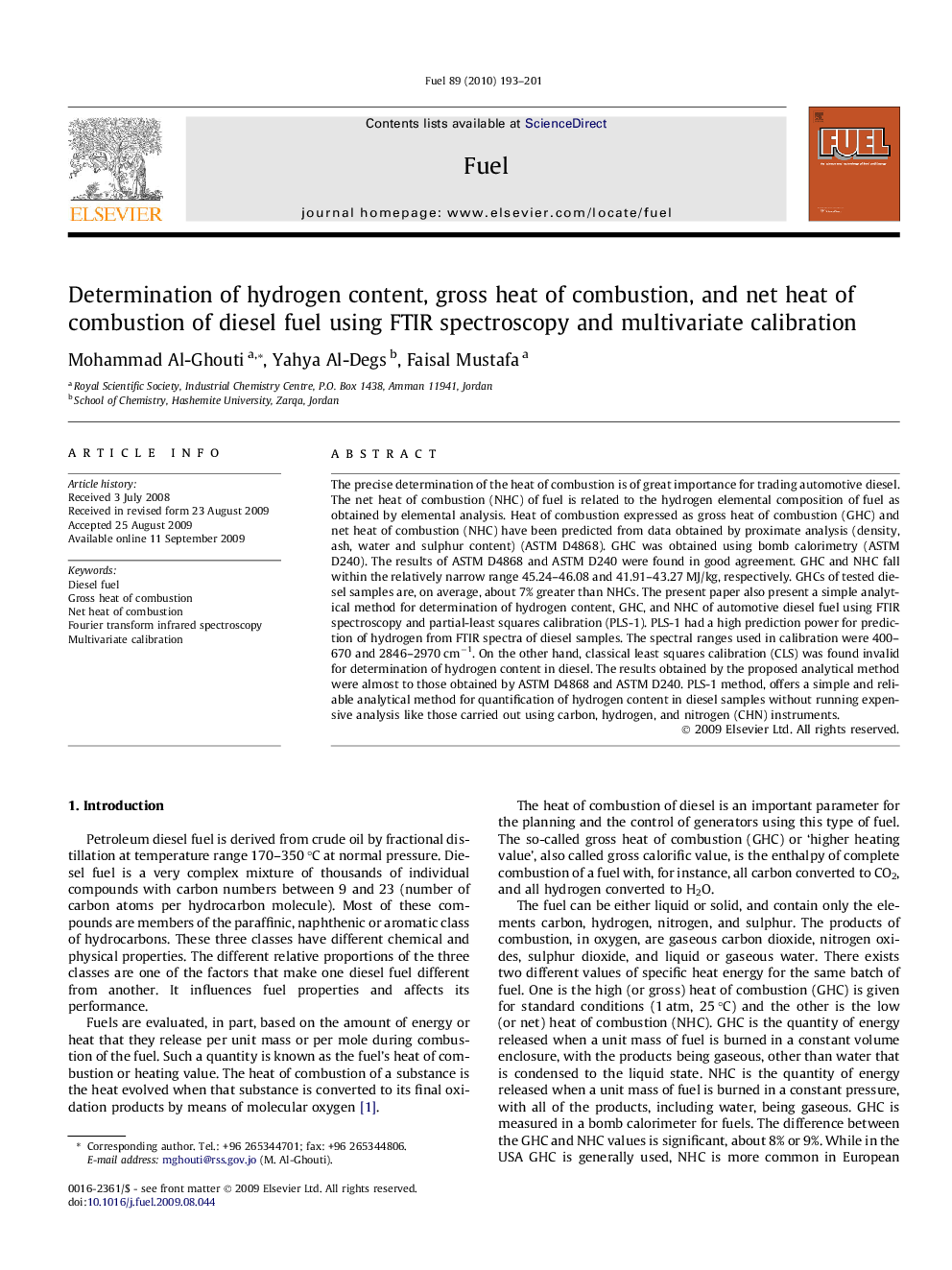| Article ID | Journal | Published Year | Pages | File Type |
|---|---|---|---|---|
| 206813 | Fuel | 2010 | 9 Pages |
The precise determination of the heat of combustion is of great importance for trading automotive diesel. The net heat of combustion (NHC) of fuel is related to the hydrogen elemental composition of fuel as obtained by elemental analysis. Heat of combustion expressed as gross heat of combustion (GHC) and net heat of combustion (NHC) have been predicted from data obtained by proximate analysis (density, ash, water and sulphur content) (ASTM D4868). GHC was obtained using bomb calorimetry (ASTM D240). The results of ASTM D4868 and ASTM D240 were found in good agreement. GHC and NHC fall within the relatively narrow range 45.24–46.08 and 41.91–43.27 MJ/kg, respectively. GHCs of tested diesel samples are, on average, about 7% greater than NHCs. The present paper also present a simple analytical method for determination of hydrogen content, GHC, and NHC of automotive diesel fuel using FTIR spectroscopy and partial-least squares calibration (PLS-1). PLS-1 had a high prediction power for prediction of hydrogen from FTIR spectra of diesel samples. The spectral ranges used in calibration were 400–670 and 2846–2970 cm−1. On the other hand, classical least squares calibration (CLS) was found invalid for determination of hydrogen content in diesel. The results obtained by the proposed analytical method were almost to those obtained by ASTM D4868 and ASTM D240. PLS-1 method, offers a simple and reliable analytical method for quantification of hydrogen content in diesel samples without running expensive analysis like those carried out using carbon, hydrogen, and nitrogen (CHN) instruments.
